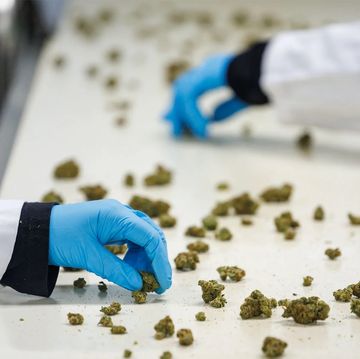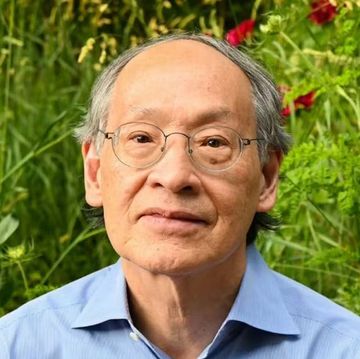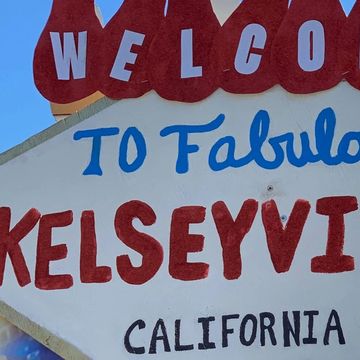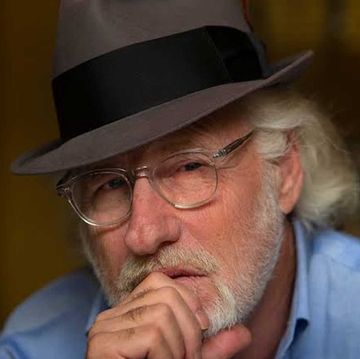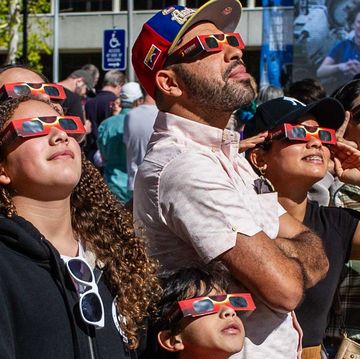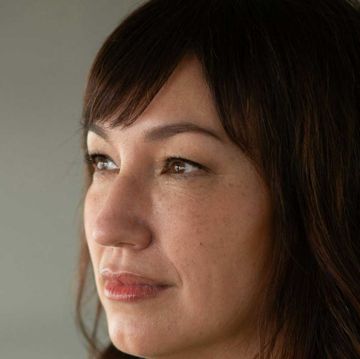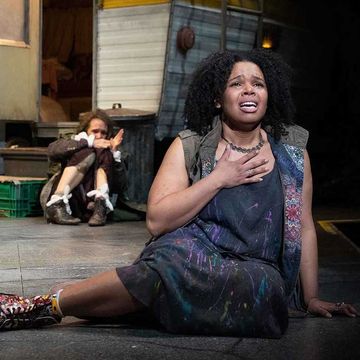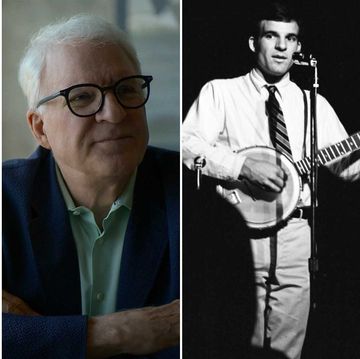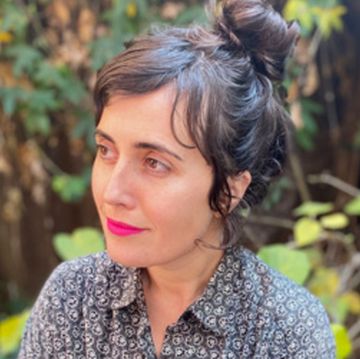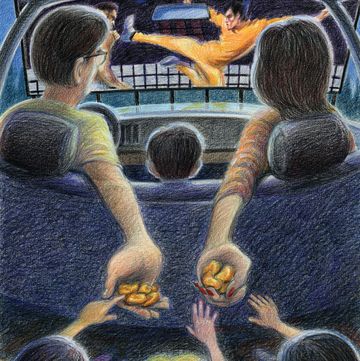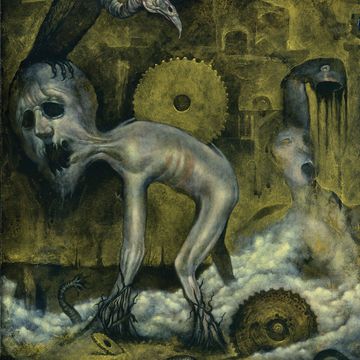In the summer of 2001, on a 100-degree day in New York City, I crossed Delancey Street, walking very slowly over to John Coplans’s place at 189 Bowery on an errand. He lived in a two-floor loft in a low old building that’s been replaced by a 20-story steel-and-glass hotel. His studio was on the lower floor and in semidarkness when I arrived. There was a camera with Polaroid film set up on a tripod, and on another was a video camera with a monitor nearby; some small instant-photo studies were laid out on a table. Coplans was wrapped in a bathrobe, moving around while glancing at his naked poses on the video screen. I was there to pick something up, and I remember his assistant, Bradford Robotham, being perfunctory and protective of him. I got what I needed and left.
Earlier that summer, I had been introduced to Coplans by his wife, the artist Amanda Means, on the checkout line at Dean & DeLuca. By this time, he was long gone from the magazine Artforum, which he had cofounded. He had been at work on his photographs for almost 20 years, receiving positive reviews and gallery and museum shows for self-portraits of his jutting belly; giant blotched hands; wrinkled, twisted torso; feet with broken toenails; and fists settled like Doric capitals above his hairy back. The always black-and-white photographs were sometimes very large and in single or multiple sequences.
Stocky and suspendered, white-haired and rumpled, he said, “Perhaps you don’t recognize me with my clothes on.” This was a practiced comment but still very funny. I had to look into this guy. Later, I wrote a review of his collected criticism, Provocations, which had just been republished (that errand may have been related to the article). My first line read, “John Coplans…is going to need a smart biographer.” Twenty years passed. I began trying to be that person. It was a very Coplans-like thing to do. He once said, “So the easiest thing is to start something you don’t know anything about.”
This article appears in Issue 27 of Alta Journal.
SUBSCRIBE
John Rivers Coplans “was God or the devil, with one of the best eyes in the business,” as one former associate said of him. Born in 1920, he had a late-Victorian-style upbringing and was preoccupied with sex and the body, like Rabelais. The Renaissance writer was also a physician, while Coplans came from a family of physicians, and the similarities didn’t end there. Barbara Rose, one of the New York art critics whom the originally California-based Artforum initially recruited, “had it with him the day he opened his desk drawer and showed me his sex toys.” The painter Wayne Thiebaud remembered him as outspoken and calculating to be outrageous: The first time he met him, Coplans asked him, “Do you have a daughter?” “Yes.” “So do I,” he said and then asked, “Why don’t we have affairs with each other’s daughters?”
Maybe this kind of talk was a continual social experiment and all of a piece with his experimental life. And what a life. He was plainly brilliant and staggeringly productive. Being around him, a colleague said, “was like being on a train going 120 miles an hour.” Coplans made lasting contributions to art criticism; to photography, as both a historian and a practitioner; as an editor and a graphic designer; and as an educator and mentor to many women, as well as men. He never stopped taking the piss out of people.
In the visceral chronology he wrote about himself, included in one of the books collecting his photographs, A Body, Coplans describes his youth shuttling back and forth shipboard between London and South Africa and in and out of various schools. He gave up on formal education at 16. He returned to England, and after a brief period in the air force, he attended the Royal Military Academy Sandhurst. Upon graduation, he joined the King’s African Rifles. He was given lessons in Swahili, and as a platoon commander he led African troops through Ethiopia with the Allies as they drove out the Italian Army in their first major victory of World War II. With these same troops, Coplans then moved on to one of the most horrifying fronts of the war, Burma, fighting Japanese soldiers in the jungle. He was briefly detained and nearly died of dehydration.
He details not so much the gore of war but rather its transgressions and infantilism. For example, as his platoon entered Mogadishu, he writes, the fleeing Italians shat on anything that might be of use to the conquerors, such as typewriters. And then there are the numerous tropical diseases that reduced them all to pathetic, tragicomic figures:
We are shitting so often we stop wearing pants and cover our nether regions with towels. We look like an army of women. On the road the men hang their butts over the tailgates of the trucks, farting and shitting away.… We live in tents.… The hyenas and lions are out every night, baying, growling and snuffling around our fires.… Dysentery, malaria, and ticks are a constant hazard.
As often as he relates bombings and deaths, there is also the element of the body under extreme duress that would later inform his photographs, underlining the notion of how experience resides in the body and what it brings to the content of art.
After his military service, he returned to London, improvising a life as a budding artist. Though Coplans was born in London, he was usually identified as South African in British art reviews, and he was later at pains to correct that. He became a building contractor, while painting and attending evenings at the Institute of Contemporary Arts. There, as he said to the art historian and former editor of ArtNews Amy Newman in an unpublished interview, the period’s best thinking on art was coming from Lawrence Alloway, the self-taught, egalitarian, abrasive critic, who looked at social experience as a prime mover of artistic intent. Alloway’s criticism, characterized by what the art historian Robert Rosenblum called “factual solidity,” was to be a great influence on Coplans’s criticism.
In 1960, Coplans abruptly left England for San Francisco. He was already halfway through his life; it was a seemingly rash decision. He described the impulse to the Archives of American Art’s Oral History Program:
I saw…“On the Beach.”… The submarine comes up in San Francisco harbor and the periscope goes up and there is that incredible shock of San Francisco abandoned and not a person there.… I don’t know how they cleared the streets…but they did it somehow or another. I saw this and I said, well, there is a climate equivalent to Cape Town where I came from. It…looked magnificent.… One of those beautiful cities around the sea.
Within the year, he had an exhibition of his paintings at the de Young Museum, found a teaching job at UC Berkeley, and was an invited critic at other art schools. Coplans started writing about San Francisco artists for Studio International, ArtNews, and Art in America. One day, his cousin Jonathan Bloomberg visited and asked him, “How did you get those jobs with not even high school education?” “Why, the accent, my boy, it’s the accent,” he said.
Brian Wall, the British sculptor, who began as an assistant to the influential British sculptor Barbara Hepworth and later taught at Berkeley, knew Coplans both in England and in the United States. When Coplans was first in London, Wall said, he was “banging nails and digging trenches. He was an unhappy boy. [That work] didn’t add to his self-image.” While Coplans “knew everybody in London,…he didn’t get the nod. It was still a very closed society.… [He was thought] not of the right background.”
California, however, galvanized him to do all he seemed to have prepared himself for in his earlier life. Coplans had traveled Europe, met some of the most important postwar continental artists, and spent long hours absorbing the canonical works of the major European museums. He had firsthand experience with arts and crafts in Ethiopia and was familiar with those of South Africa, at a time when a working knowledge of the continent’s art among non-African artists and teachers was a rarity. He had good people skills from his tenure as an army officer.
In San Francisco, Coplans was on the lookout for informed and engaged people. He met Walter Hopps, who was a very unusual thing: a curating wunderkind. Within a few years, he would organize the first American museum retrospective of Marcel Duchamp, in Pasadena. Coplans encountered Hopps at a talk he gave on West Coast art at the San Francisco Art Institute. Coplans was immensely impressed by his ability to recall enormous amounts of information.
Coplans and Hopps were immediate friends. “Walter had this instinctive program—he was out to create a climate in which a California art civilization could exist on its own terms,” Coplans told the New Yorker. “He was also the most intellectually generous man I’ve ever met. I needed information to write about California art, being a newcomer there, and Walter just gave me the material to write article after article.”
Coplans also met Philip Leider, who was the director of San Francisco’s John Bolles Gallery, when Coplans was trying to organize a show there. “Coplans used to pound every door, ‘You need to do this. It’s really important that you show this one, you show that one,’ ” Leider recalled. Coplans told him that San Francisco artists needed a magazine.
Leider, who was ambitious to be the editor of a cultural publication of some kind, would become Artforum’s first editor in chief. Meanwhile, a salesperson for the Pisani Printing Company, John Irwin, heard about Leider and Coplans’s plan. Irwin was trying to expand his employer’s business, which already included Opera News and Del Monte labels. The printer agreed to back the project; a West Coast art magazine seemed like fun. Coplans, Leider, and Irwin were its principal cofounders.
The idea of it being a forum, open to all points of view on art, came from Coplans’s reaction to the close-mindedness of San Francisco artists, museums, and collectors: there was no communication between these groups, and there was little intellectual dialogue about their art. In England, for all his dislike of British artistic provincialism, there was a very lively exchange of ideas among artists and critics. “The only way you would ever get something going there was to have a journal and you could openly discuss some of these situations,” he told the Oral History Program.
The premier issue of Artforum—Vol. 1, No. 1, June 1962—has an obscure cover that is a color photograph, in a seamy yellow, of a shadowy figure that is cast by a Jean Tinguely sculpture. There are six feature articles, including one on Tinguely, and 65 short reviews of current shows. Coplans’s name is on 11 of them. In one review, on the truncated Art of Assemblage exhibition that was at the San Francisco Museum of Art, having originated at the Museum of Modern Art in New York, he describes San Francisco as a “culturally pretentious town” and the museum as “like some decayed nineteenth century institution struggling to keep up with the times.” He notes, though, that “for this exhibition the staff has made an unusual effort, to obvious effect, it is beautifully hung and arranged.”
One of the principal lessons Coplans learned from Alloway had to do with being “pluralistic…the idea of a wide angle where you can have simultaneous different, disparate movements going on.” The magazine’s editors believed that the art being made in California was every bit as good as that in New York, and Artforum made a point of covering West Coast ceramics, pop art, hard-edge painting, and the Light and Space artists practicing within the perception-based movement.
Coplans took credit for the 10½-inch-square format (a distinctive characteristic to this day), which didn’t privilege horizontal or vertical reproductions. He also thought the publication had to be attractive. He told the Oral History Program, “It had to look good. It had to have good paper, first class layout.” Time and again, British artists who immigrated to the United States said they did so because they saw American art as having expanded the frame of what was possible. It may seem like a small thing, a formal, even esoteric aspect, but among artists, the square cover—abstract and influenced by recent American art—was momentous.
Coplans’s magazine covers created the potential for a seemingly continuous frame of activity within; graphics were placed exquisitely inside the void. The magazine quickly developed an intellectual allure, an unconscious hipness that seemed to invite the reader into some fantasy of itself—a new intimacy between critical and creative discourse. The idea of the expansion of the frame was also personal: Coplans married that American pictorial invention, which he saw most directly in the paintings of Mark Rothko and Barnett Newman—art that was not beholden to European models—to the country’s myths of the frontier and limitless space. He found works that qualified for this questionable western fantasy first in San Francisco and Los Angeles, among beatnik assemblagists. He writes about this in one of the magazine’s early issues:
What is important to understand about this group of hipster artists is the profound effect on their work of the backlash of the Beat Generation. The major lasting outcome of the San Francisco Renaissance in literature was to take the poets out of the libraries and into the streets. The stranglehold of Culture (Eliot, Tate, the Southern Agrarians), was finally broken, and the parallel situation occurs with these artists. They have no need to turn to New York (de Kooning, Kline, Newman, Hofmann, etc.) for their iconography or plastic ideas, but draw on life around them, as they interpret it.
Of the San Francisco artist Wally Hedrick, Coplans writes, “He more than suspected that abstract expressionism had failed to face contemporary culture with a contemporary image,” which leads logically into pop art. Coplans said that he was “tremendously” interested in pop art because of its American qualities. He saw them sociologically, as “extraordinary in their symbolism.” In a review of an exhibition of British art, Coplans admonishes the British attitude to pop art, which he deems
parallel to the distorted image of American life that Hollywood movies give.… The younger American artist is not only in furious reaction against the values of his mass, consumer society, but also New York’s venality and corruption; deeply moved by life around him as he finds it, his approach to “pop art” is through savage satire.… American pin-ups from Esquire may appear more endearing and sexy [to British pop artists like Peter Blake]…but the horrible and desperate depersonalization of American women has to be experienced at first hand to be qualitatively and quantitatively understood.… The American sense of the fantastic coordination between money and consumption…makes everything here unreal.
The pop art phenomenon was as present in California as it was in New York. Artists in San Francisco and Los Angeles were using commonplace, everyday commercial objects and imagery in their work. In September 1962, Hopps organized The New Painting of Common Objects at the Pasadena Art Museum, which is credited as being the first museum exhibition of American pop art. A year later, at the Oakland Art Museum, Coplans put on Pop Art, USA, the first museum retrospective of pop art. The essay for the exhibition was published in Artforum, where Coplans argues that although the cool and detached-looking work “may appear indifferent to the tortured quality of life…it is in fact loaded with suppressed anxiety.”
Many of the San Francisco artists of the ’60s benefited from a postwar economy that permitted city-based bohemians to exist in an idyll; they were happy to scrape by and were not interested in being promoted by some new art magazine. Coplans voiced his dismay in the pages of the New York–based Art in America (he was writing for every major art publication at the time). In “Circle of Styles on the West Coast,” from 1964, he shares, likely not for the first time, his complaints about San Francisco artists and makes one aware that he had seen this all before, in England, where painters tried to accommodate the English landscape tradition in abstract works: “Implied in their art is the belief that they can operate from a moderate position. Their art lacks acuity of vision or a visionary obsessiveness…token modernism rather than an acute painterly perception.”
He makes further observations that though there is an abundance of art schools that give very positive reinforcement to younger artists, afterward “[they] tend to hang around the schools in a prolonged adolescence,” as there is little patronage and the museums are disengaged, proving ultimately that “commerce is not only compatible, but a vital necessity to the artist.” The San Francisco section of the essay describes the city’s art scene as having “all the charm of a merry-go-round, but the horses monotonously circle without going anywhere.” Coplans’s tough-minded criticism is evident: he assesses the products of the openness and untrammeled inventiveness of this community with sober, sound judgment. And he was right: in the coming years, a good portion of the more ambitious and talented artists in the city would move south to Los Angeles, where a more commercial support system for artists was beginning to solidify.
Within a few years of his arrival in the Bay Area, Coplans was visiting Los Angeles regularly—thanks to cheap flights between the two cities—and teaching there; he began the art gallery and established the art department at UC Irvine. He was working too hard on the magazine and on his own writing to continue his painting practice. The magazine was being widely read by its target audience—artists, museum people, critics—and there was also more coverage of New York and more New York–based critics writing for Artforum. Coplans was mostly in Los Angeles by 1965, and Artforum relocated there, above the Ferus Gallery.
A few years previous, on one of his first visits to the gallery, he had seen Andy Warhol’s exhibition of Campbell’s Soup Cans. A few had been sold. Coplans convinced the gallery director and co-owner, Irving Blum, not to break up the set. Blum bought the pieces back and then purchased the set for himself. Years later, he sold the paintings to the Museum of Modern Art for $15 million. Coplans went on to become a curator at the Pasadena Art Museum and gave Roy Lichtenstein, Judy Chicago (then known as Judy Gerowitz), Richard Serra, and many other historic artists their first solo museum shows. Warhol’s first major retrospective was presented there in 1970. Sculptor Mark di Suvero showed up at the museum one day, and Coplans asked, “Want to use the parking lot?” There, di Suvero created Mother Peace. Blum’s Ferus Gallery group was so macho that the artists were collectively known as the Studs. There were complaints from Los Angeles artists that Ferus was getting most of Artforum’s attention, and more resentments followed as the magazine pulled up stakes again.
Artforum’s reported circulation in 1963 was 5,483. Its ambitions of being the most serious and vanguard publication in visual arts soon progressed beyond the original mission of its focus on the West Coast, and in 1967, the publication relocated to New York. Blum was importing and selling a lot of work by New York artists represented by Leo Castelli, and most of the magazine’s advertising was from New York galleries. Editor in chief Leider worked primarily with a group of academically trained East Coast critics who were recruited by Coplans and longtime contributor Rose. These were Artforum’s most noted years for formalist and post-formalist criticism, when Rosalind Krauss, Michael Fried, Robert Pincus-Witten, and Max Kozloff first established their reputations. By 1968, the publication’s circulation topped 10,000.
Coplans moved to New York four years after the magazine did and became its editor in chief for seven tumultuous years. Many of the writers who flourished under Leider bristled under Coplans’s leadership. He brought in many younger and nonacademic writers, but his biggest offense was hiring Alloway, who, like him, was an autodidact. Coplans, a good cook, hosted dinner parties in his home for his writers and tried his best to keep a lot of not-so-friendly intellectuals somewhat in line. Krauss recalled, “He realized he was in way over his head.”
Coplans was under intense pressure from galleries that expected good reviews in return for their advertising and, as the magazine’s impact overwhelmed any other’s, from artists who expected a cover story in order to make their careers. Much of this time is well covered in an indispensable book by Amy Newman, Challenging Art: Artforum, 1962–1974, on the early years of the magazine. Under Coplans’s editorship, and Alloway’s influence, pluralism became the byword for art of that decade; the magazine expanded coverage to contemporary art in Europe, performance, photography, and politics, feminism, and civil rights, and it often looked at the structure of power and money in the art world. It published articles on the CIA’s involvement in the promotion of abstract expressionism. For the museum issue, Coplans wrote a lengthy essay titled “Pasadena’s Collapse & the Simon Takeover,” on the Pasadena Art Museum and its board of trustees’ fiscal incompetence and other matters. During this period, he also wrote one of the first monographs on Ellsworth Kelly, for which he won the 1974 Frank Mather Jewett Award for art criticism.
Despite these accomplishments, Coplans was unable to pacify the warring camps within his editorial ranks. The last straw for two of his most important writers, Krauss and Annette Michelson, was the publication of a two-page ad for the sculptor Lynda Benglis where she appeared in a color photograph oiled and nude and projecting a huge lifelike dildo from her crotch. They soon quit to start the journal October. Eventually, Artforum, which had been published by the Cowles family since its move to Los Angeles, refused to renew Coplans’s contract. (Today, the magazine is published by Penske Media, which last fall roiled members of the publication’s staff and the art community by firing its editor in chief for publishing an open letter about the Israel-Hamas war.)
Coplans left New York licking his wounds and needing a job. He went on to direct the Akron Art Museum. There, he produced a full roster of innovative exhibitions; started a magazine specifically for the art galleries, museums, and artists of the Midwest; and began experimenting with photography, to which he devoted the next 20-odd years. In 1980, he returned to New York, and he died there in 2003.
Coplans was not someone who accumulated power, and he was no politician. He was too outspoken to get on for long with figures like museum board members, trustees of institutions, career curators, and pedants. In the words of his lifelong friend and former student, the artist James Turrell, “he often burned his bridges while he was still on them.” In many of Coplans’s statements about his career, he notes who is no longer speaking to him, the artists who abandoned him, and his anxiety attacks—without self-pity and with equanimity, as if he accepts these things as part of the territory. Anthony Korner, who until recently was the publisher of Artforum, asked me why I was so interested in Coplans. I replied that he was like the character in Baudelaire’s essay “The Painter of Modern Life,” a man driven by his curiosity to go in many directions. “Yes,” Korner said, “but it’s no way to establish a career as an artist.”
But Coplans’s achievements, as anomalous as they may appear for a career artist, add up to something far greater. His son, Joseph, put it this way: “John was nuts about moving forward: ‘The feet are in one direction.’ ” He was “not self-conscious, never depressed, self-obsessed, and…he loved being famous.”
His infectious conviction and enthusiasm helped establish a West Coast art scene by turning it on its head. Artforum challenged, dared, and championed its artists as no one had done before. Coplans described this effort to Newman for her history of the publication, recalling how he and Leider were “intensely, intensely, involved in the magazine…in a way that being an artist is.… It was an extension of our persona.”•







